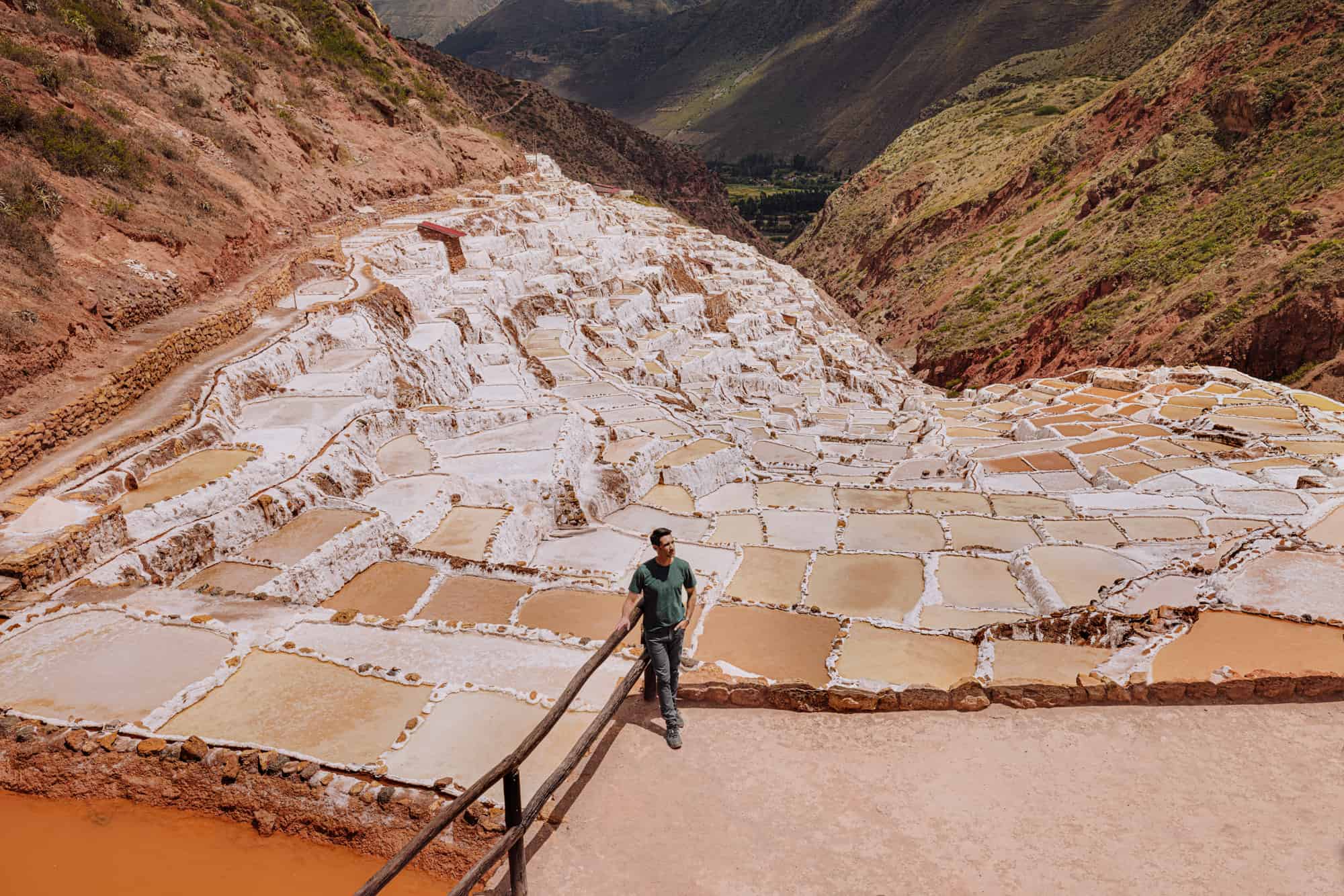Salt Mines of Maras, Peru: Know Before You Go

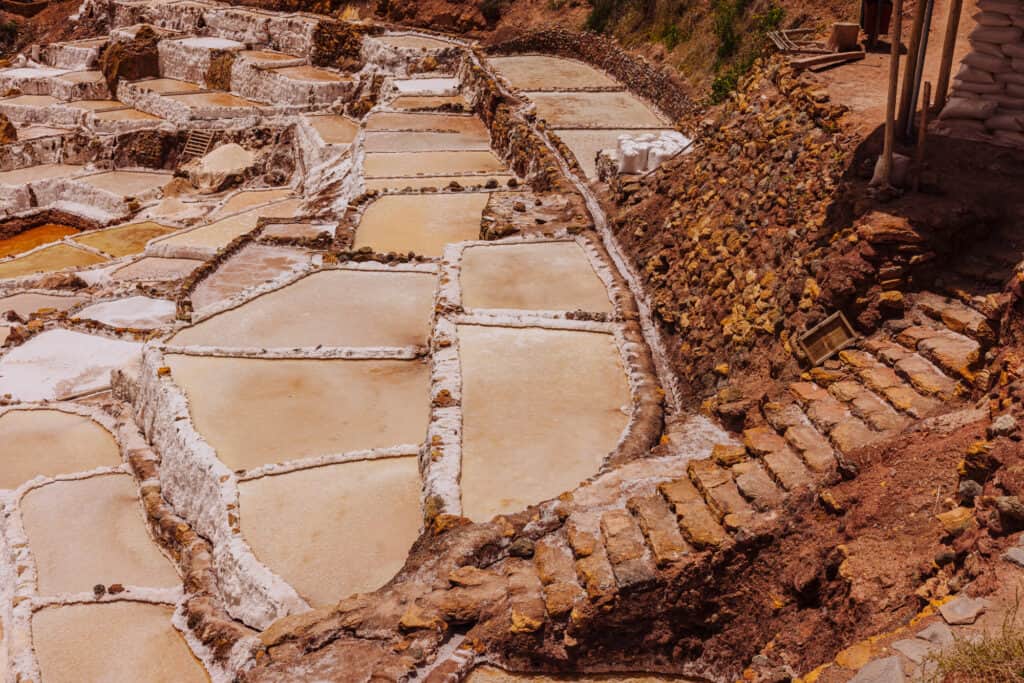
The salt mines of Maras, also known as “Salineras de Maras,” have become Insta-famous in recent years, providing unique backdrops for dazzling photos.
But this is one site in the Cusco region of Peru that actually pre-dates the Inca Empire!
The salt mines are in a valley, surrounded by steep hillsides. They consist of a vast network of terraced salt evaporation ponds of varying shades of white and brown.
While the salt mine is privately owned by local families, and you can’t walk through the pools on your own, a stop at Maras is an interesting (and beautiful) trip from nearby Cusco.
Key Info on Maras:
- 75 minutes from Cusco
- 10 Soles entry fee ($2.50-ish)
- You can’t walk through the salt pools
- No cell reception
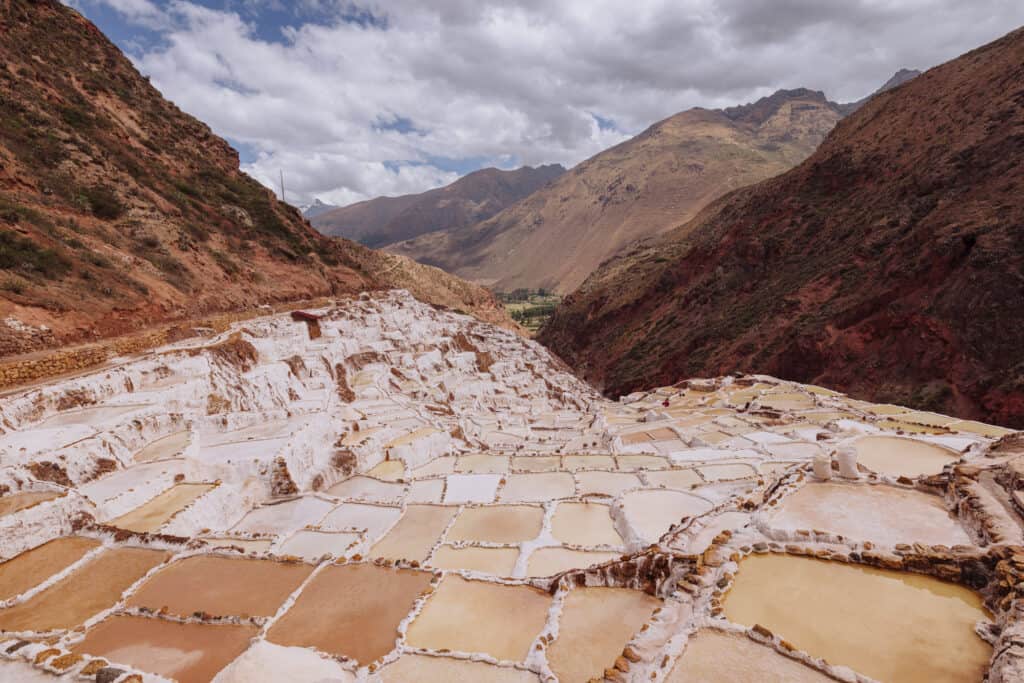
Cusco to Maras Tours
Driving yourself around Peru is pretty challenging. I’d recommend hiring a driver for your day trips, or taking a tour from Cusco.
These are three excellent, highly-rated tours of Maras from Cusco.
➡️ Click to Book Private Tour: Maras and Moray
- A guide will pick you up at your hotel in Cusco for a private tour.
➡️ Click to Book: Small Group Tour
- You’ll be picked up with a small group to head to Maras and Moray
➡️ Click to Book: Maras & Sacred Valley
- This is a full-day tour of the Sacred Valley from Cusco, including stops at Maras, Pisac, Ollantaytambo, and other sites.
And, yes: you’ll see llamas and alpacas along the way!
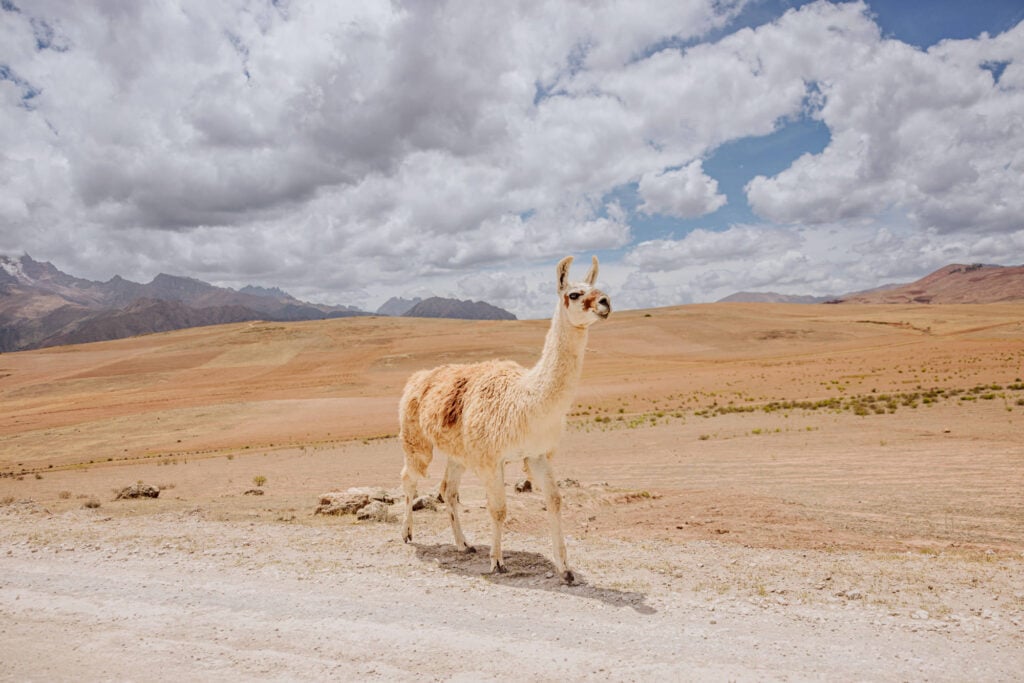
Salt Mines of Maras: Location
The salt mines are near the small Peruvian town of Maras, which is about 25-miles from the city of Cusco.
You can see on the map how close Maras is to the famous Inca ruins at Moray, along with the town of Urubamba and the Inca sites at Ollantaytambo and Chinchero.
A Visit to the Salt Mines of Maras
Again, it’s really best to hire a private driver or take a tour to visit Maras. You’ll travel along a single-lane dirt road, which is cliffside down to the mine in the valley. The drive also requires navigating that road while large salt trucks are driving up toward you from the business below.
Plus, you can see in the photo how crowded the road and parking lot get with tour buses and shuttles.
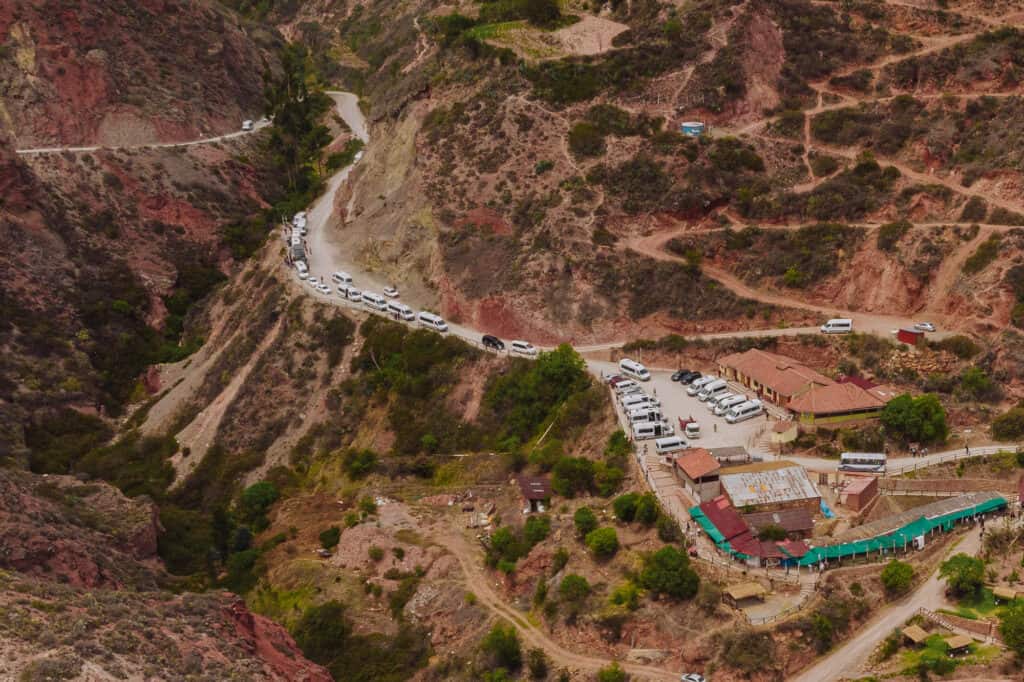
Salineras de Maras Entry Fee
You’ll pay an entry fee of 10 Soles to visit the salt mines, which is around $2.50 USD. It’s best to get there early in the morning, around 9:00am. By 10:00am the viewing platforms become very crowded.
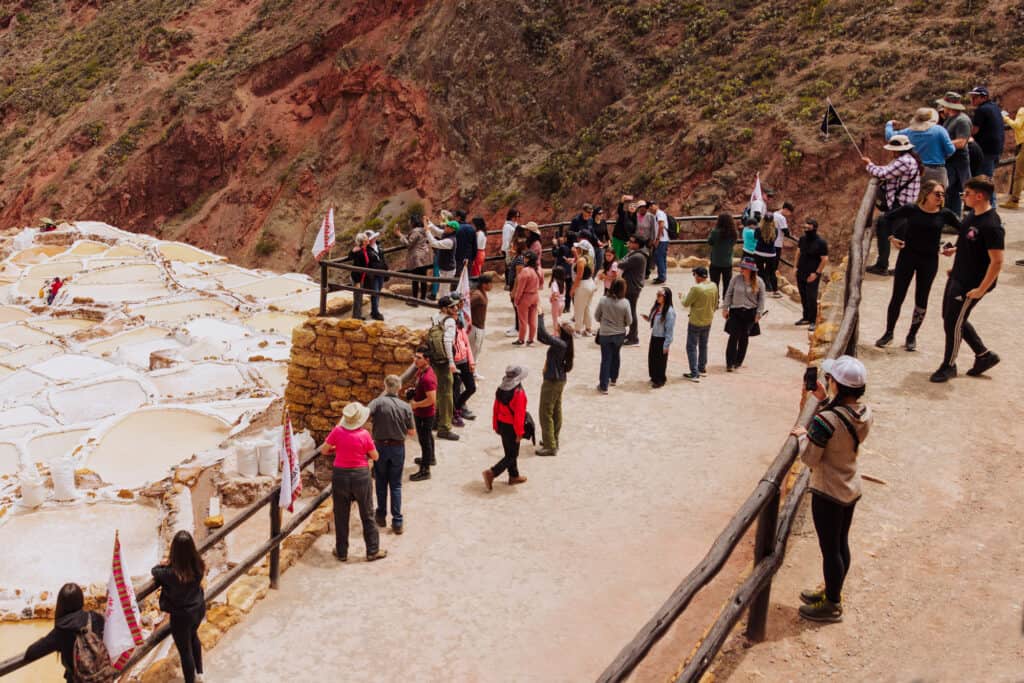
On your way out, you’ll walk through a series of outdoor shops where vendors are selling souvenirs, snacks, and of course: a wide variety of salt products!
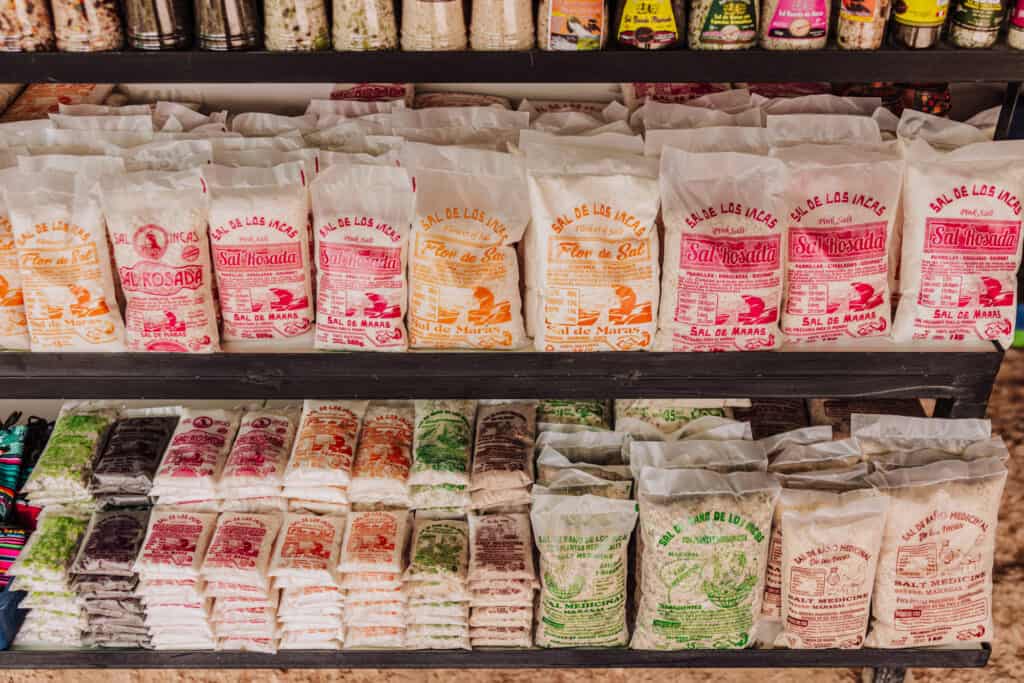
Photography at Salineras de Maras
Some visitors are surprised to find out: you can’t walk the narrow pathways between the salt ponds anymore. Many old Instagram photos show people randomly walking through the terraced pools. These days you’ll be kept above the salt mine on paths and viewing platforms.
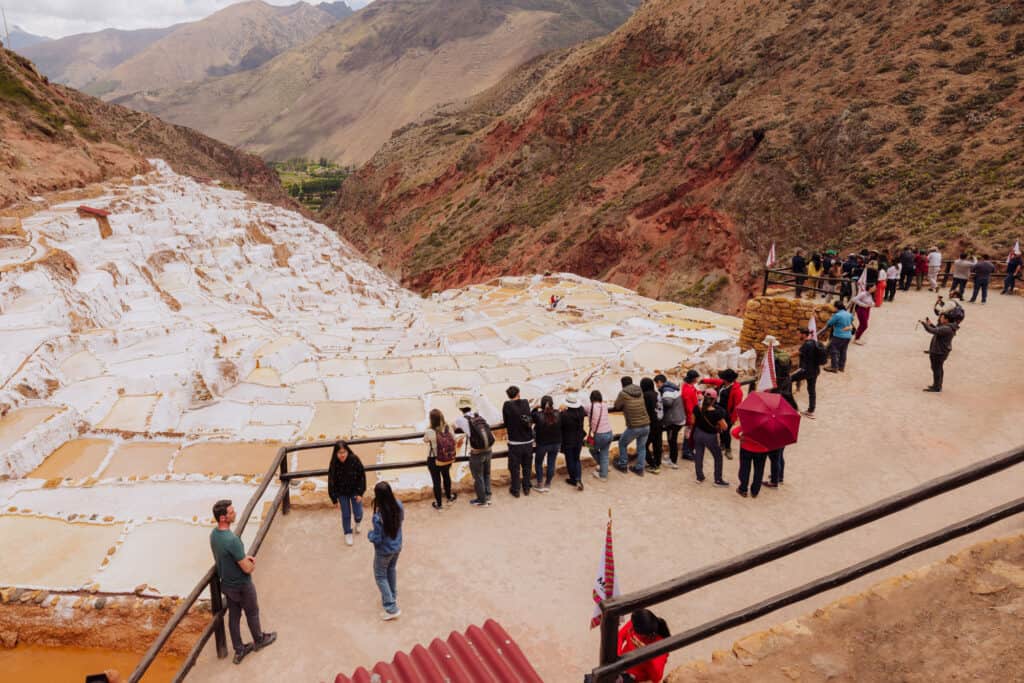
While tourists hope for bright sunshine, the salt mines are best photographed on an overcast day.
You’re asked not to fly a drone from the viewing platform at the salt mine itself. As an alternative, you can pull over on the cliff above in a parking lot and launch a drone from there.
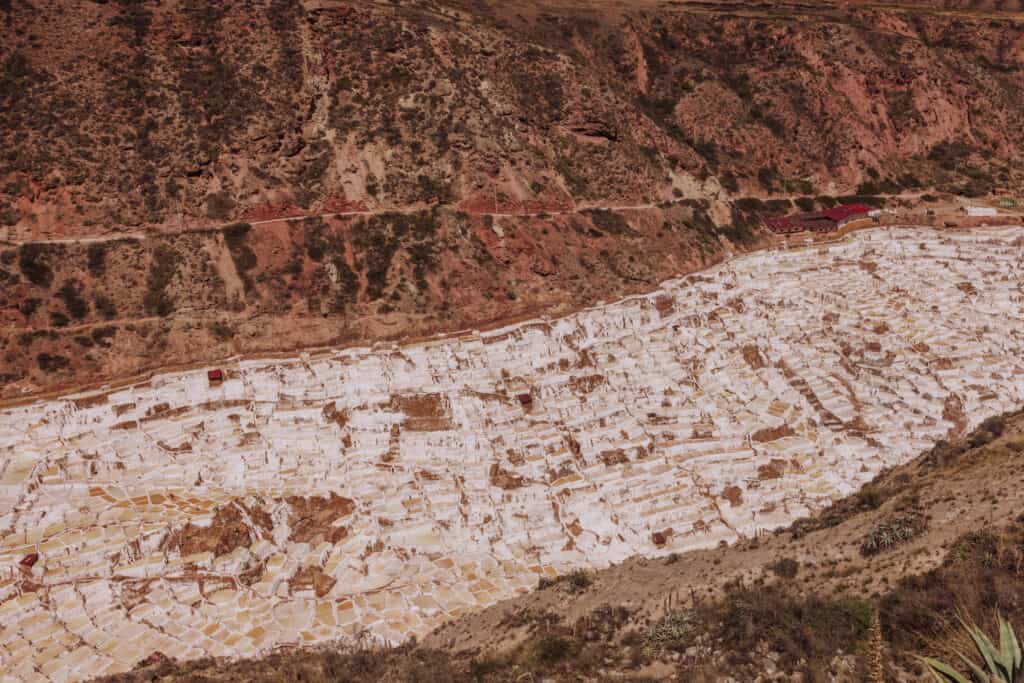
History of the Maras Salt Mines
The exact historical origins and initial discovery of the salt mines of Maras, also known as Salineras de Maras, remain a subject of speculation and folklore, as no concrete records exist regarding their original discovery.
The salt mines were first discovered by the ancient inhabitants of the region, in pre-Inca times.
After the discovery of the natural saltwater springs in the area, the local community experimented with salt production and started to develop the terraced salt ponds Maras is known for.
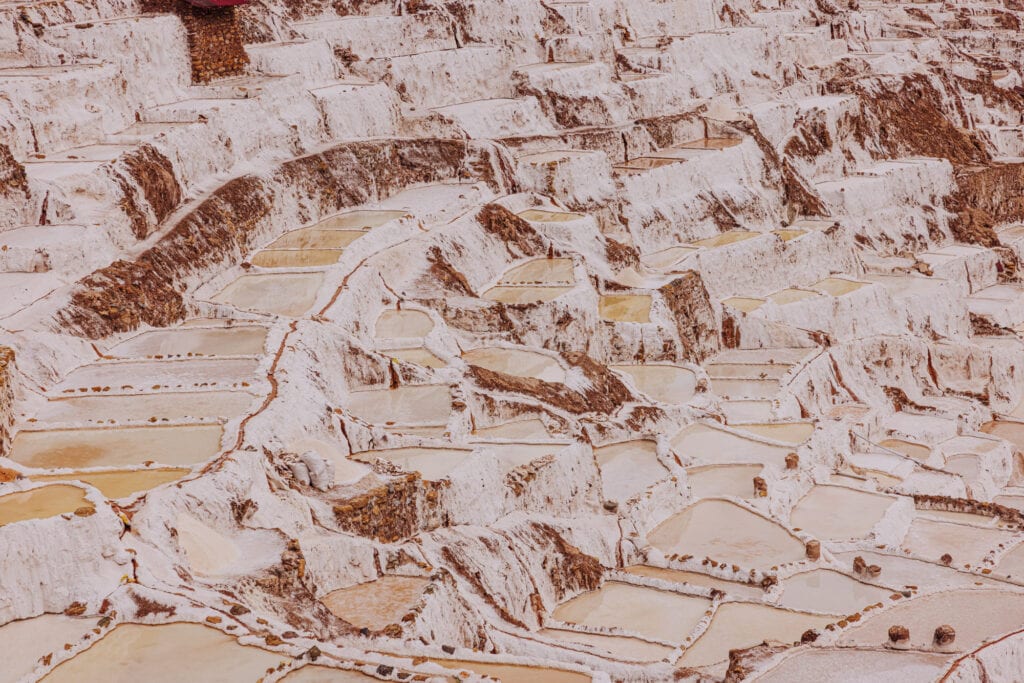
Over the centuries, the local communities refined their salt production techniques, perfecting the art of cultivating and harvesting salt from the natural springs.
The natural saltwater springs, coupled with the high-altitude environment and the intense Andean sun, provided the optimal conditions for the evaporation and crystallization of salt, leading to the establishment of the intricate terraced salt pans that are still in use today.
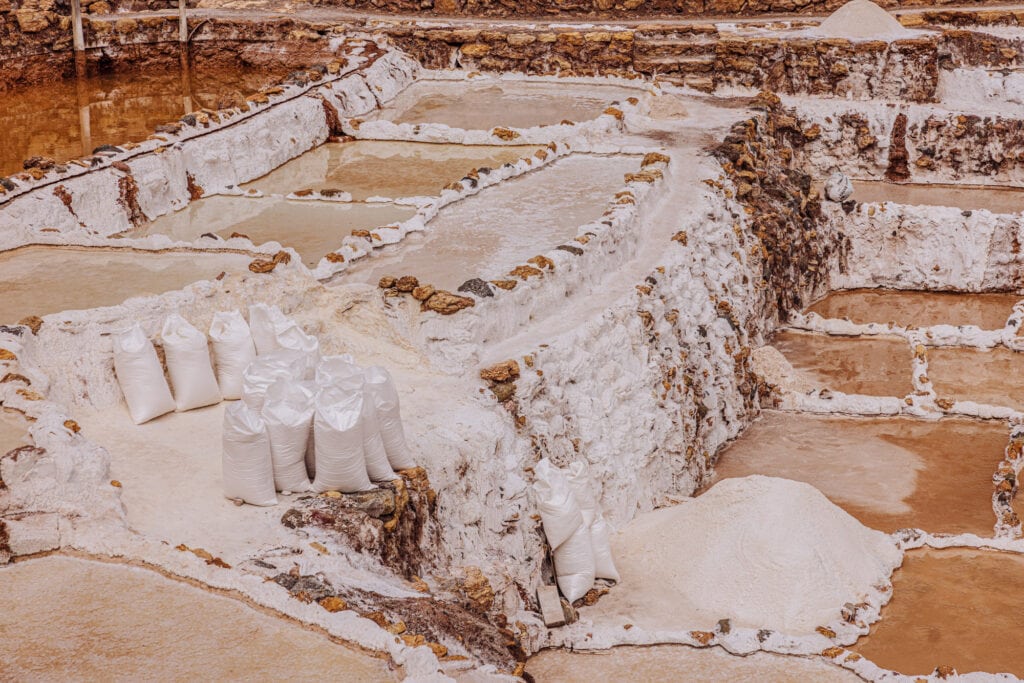
The Salt Mines of Maras Today
The salt mines have been in continuous use for centuries, with a tradition of salt production that has been passed down through generations by the local community.
The salt mines of Maras are operated and maintained by the local families in the surrounding area, who adhere to traditional methods of salt harvesting and production that have remained largely unchanged over the years. The community members work together to manage and cultivate the terraced salt evaporation ponds, carefully monitoring the water flow and salt crystallization process to ensure the optimal production of high-quality salt.
Depending on the season, you’ll see them harvesting salt from the pools as the water evaporates.
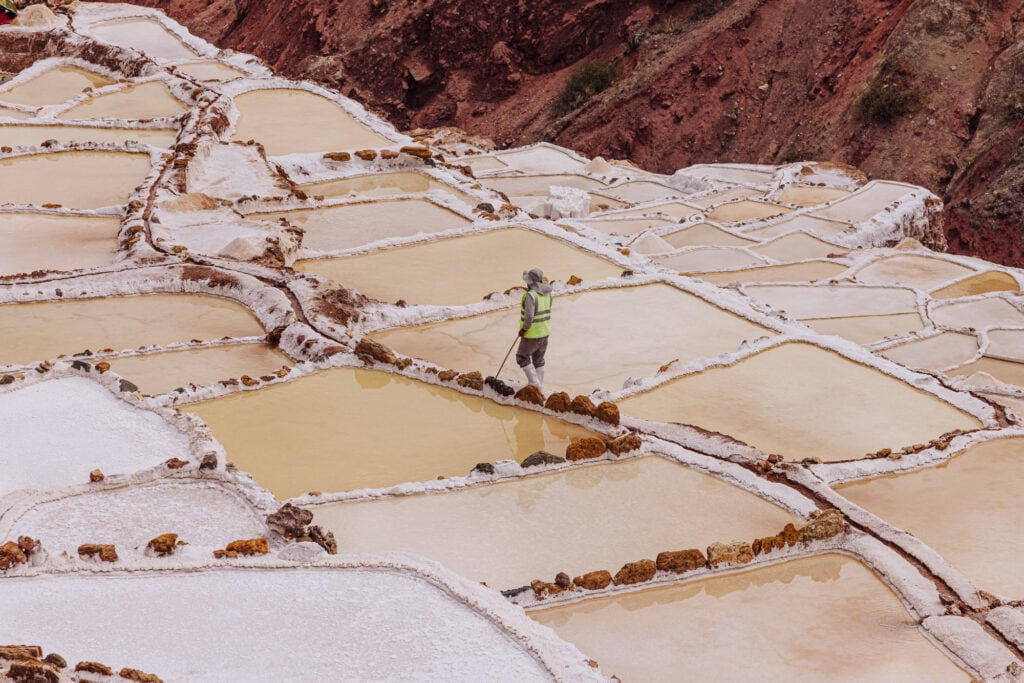
The salt production process at Maras begins with the diversion of natural saltwater springs into the network of terraced salt pans or pools. As the saltwater evaporates under the sun, it leaves behind a layer of crystallized salt, which is then harvested and collected by the workers. The harvested salt is typically sold locally or distributed to markets in nearby towns and cities, or exported abroad.
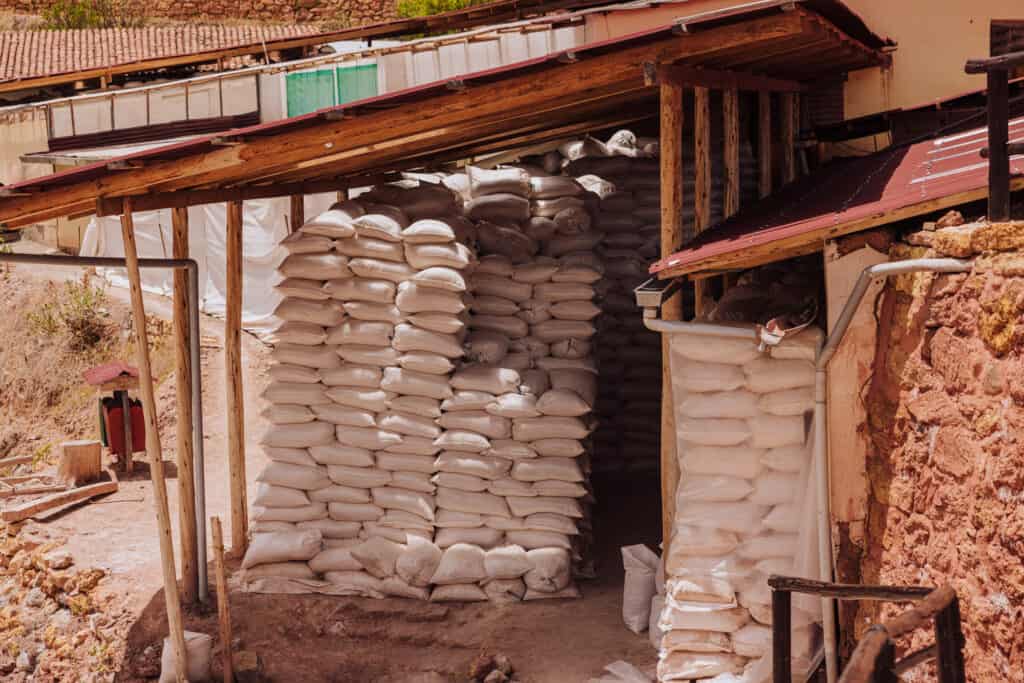
You’ll see several grades or colors of salt in production.
White salt is sold for human consumption, while brown salt is sold into the agricultural market for livestock.
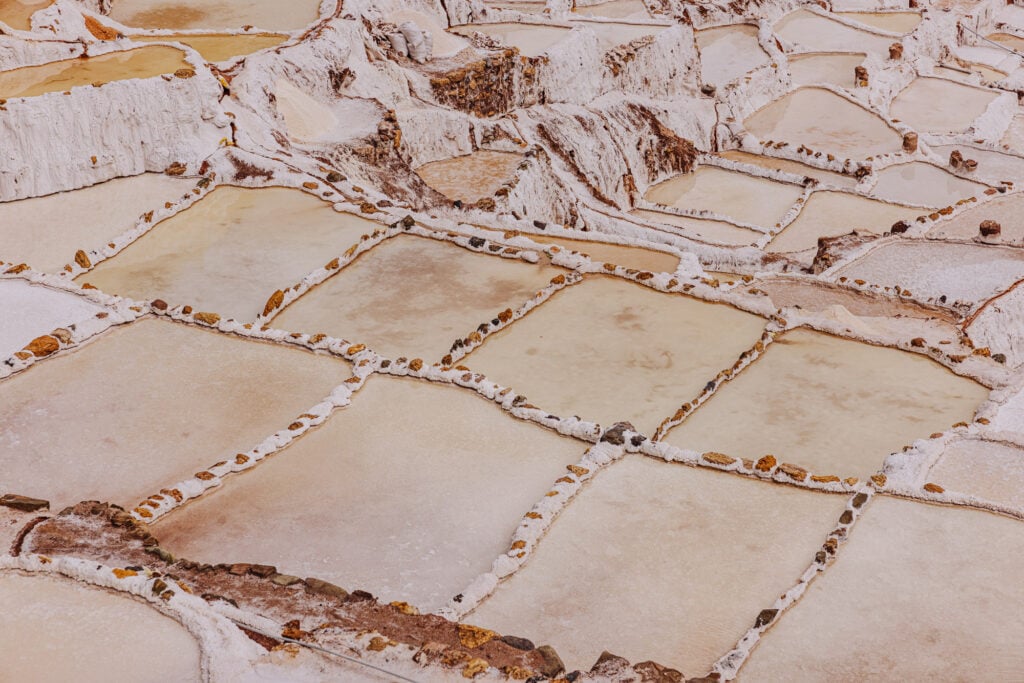
Peruvian Pink Salt
Peruvian pink salt, also known as Maras salt, is a type of gourmet salt that is harvested in the Maras salt mines. This natural salt is highly regarded for its unique flavor, pink hue, and mineral-rich composition.
The distinct pink color of the salt is attributed to the presence of trace minerals, such as iron, within the salt crystals. These minerals not only give the salt its characteristic color but also contribute to its flavor profile, making Peruvian pink salt a prized ingredient in gourmet cuisine.
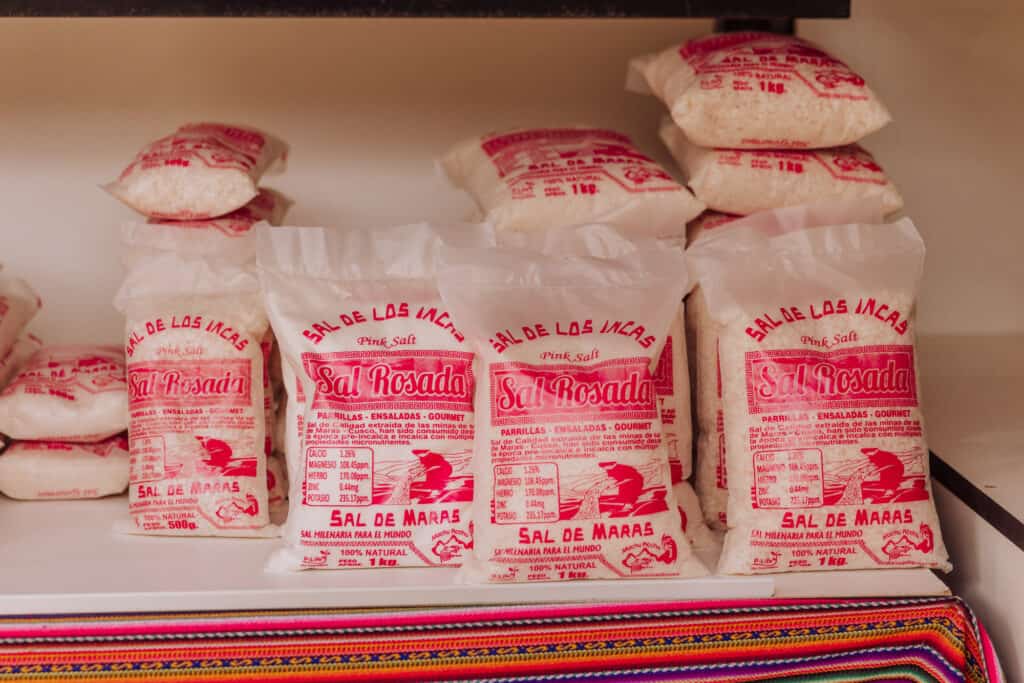
Peruvian pink salt is celebrated for its delicate taste and mild saltiness, which allows it to enhance the flavors of various dishes without overpowering them. It is commonly used as a finishing salt, added to dishes just before serving to impart a subtle crunch and a hint of its unique mineral-rich taste. Chefs use it on a wide range of savory and sweet dishes, including meats, seafood, vegetables, and even desserts.
Due to its natural and unrefined nature, Peruvian pink salt is often considered a healthier alternative to regular table salt, as it retains its natural mineral content without the addition of additives or anti-caking agents.
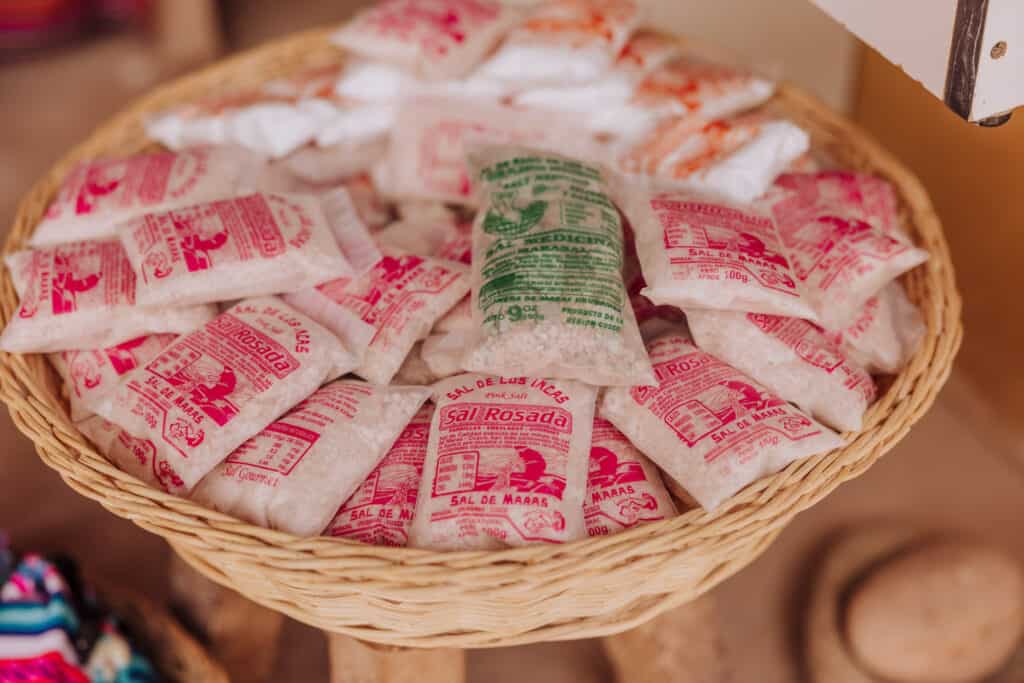
Best Time to Visit Maras
The best time to visit Maras, Peru, and its famous salt mines, is the dry season, which generally extends from May to September. You can expect minimal rainfall and clear skies, along with mild temperatures.
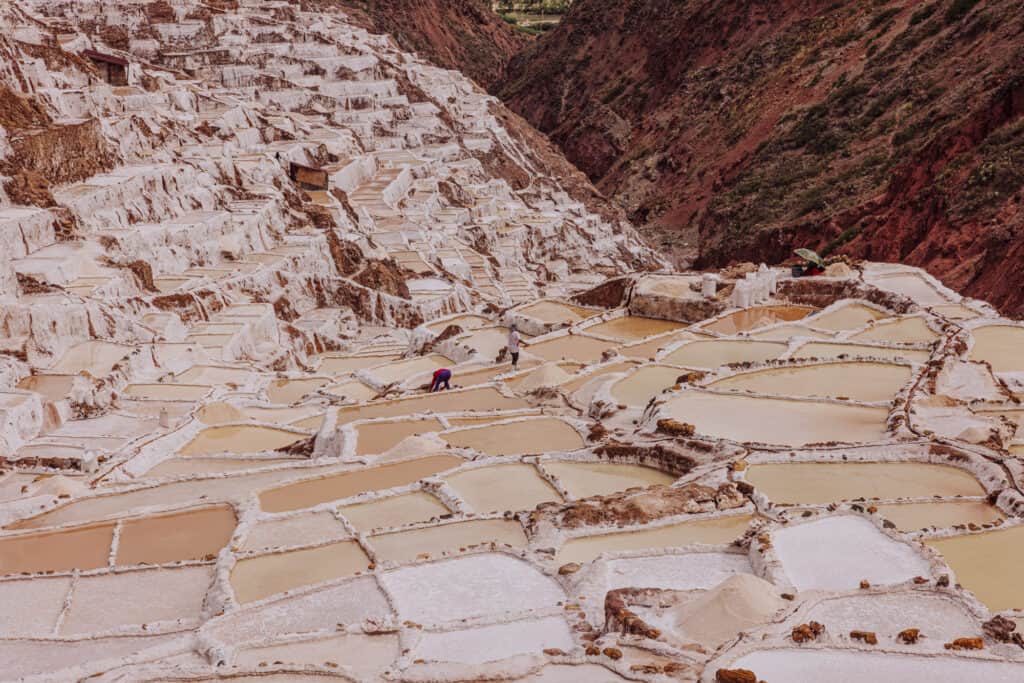
While the dry season is generally considered the best time to visit, it’s important to note that mornings and evenings can be chilly, so it’s best to pack and dress in layers.
It’s also worth considering the peak tourist season, which typically occurs from June to August. During these months, Maras and its surrounding attractions see much larger tourist crowds.
So, with everything considered, a visit during one of the shoulder-season months, like May or September, would be ideal.
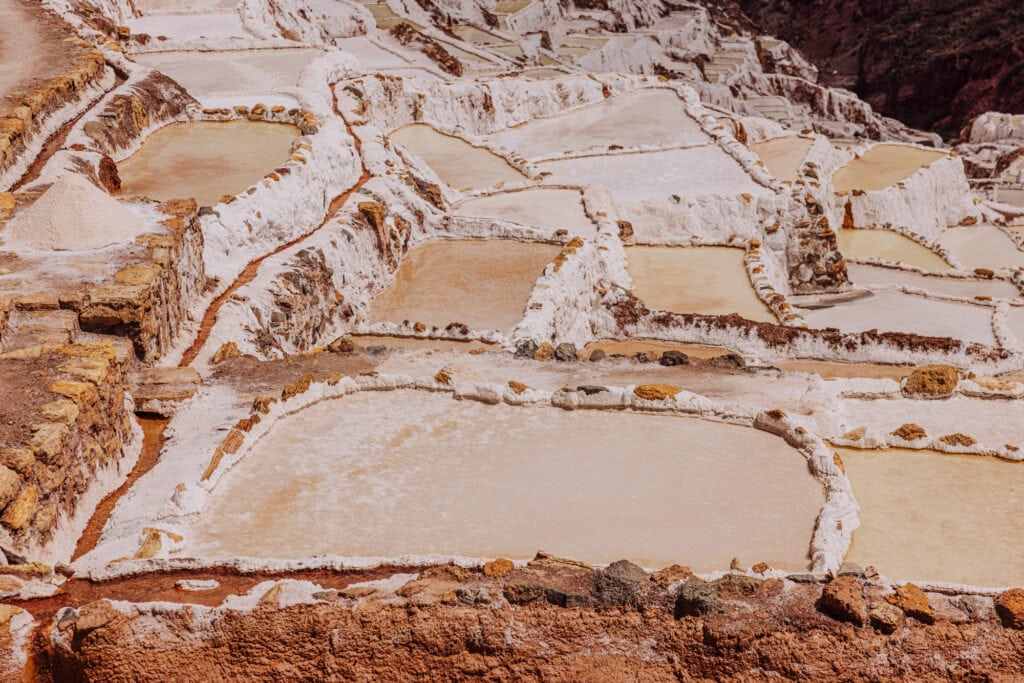
Maras to Moray
The salt mines of Maras are just a few miles away from the Inca ruins at Moray. These are two very different experiences, but close enough to combine into a good day trip from Cusco.
Moray is a 600-year-old archaeological site, known for its unique circular terraces.
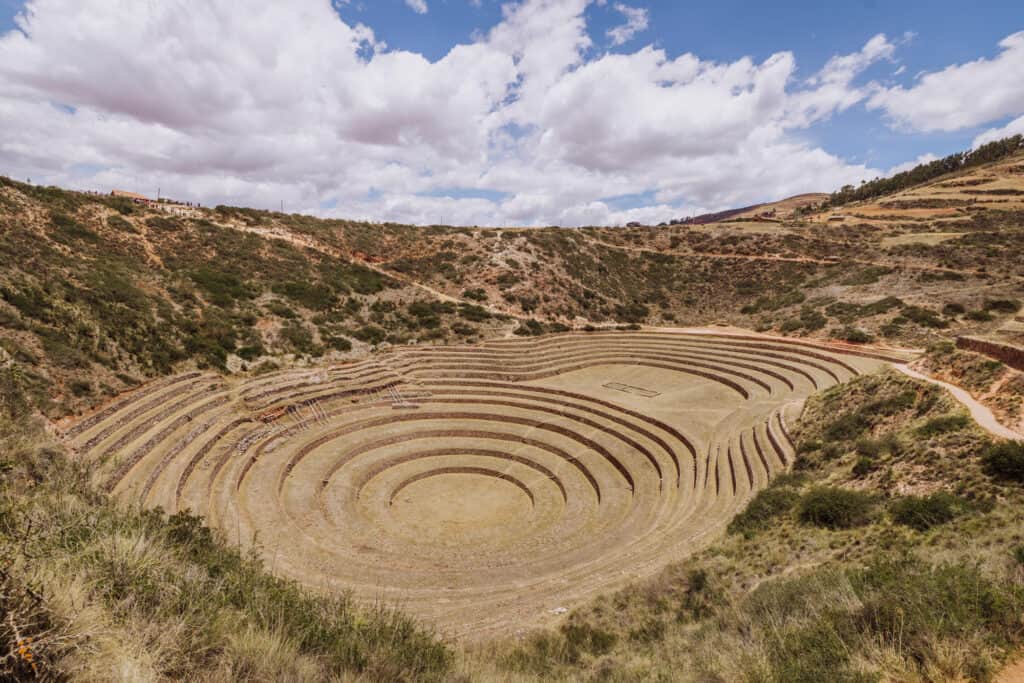
The terrace resembles a giant amphitheater, but most experts believe they were actually built as a kind of laboratory for agricultural experiments.
While several layers of the terraces are off-limits to visitors, you’ll be able to walk through much of the site. While most tourists seem to stay clumped up at the main viewpoint near the parking lot, it’s worth walking down the paths surrounding the site.
You’ll realize that while the terraces look more shallow from a distance, each level is actually eight or nine feet tall!
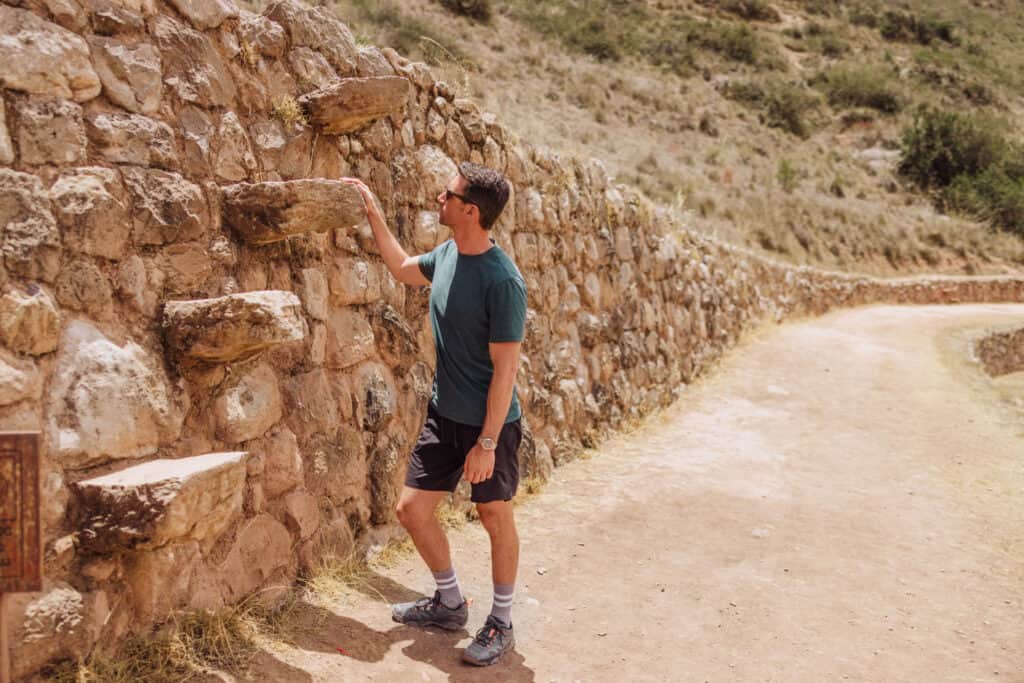
During a visit to Moray, you’ll discover how the Incas used the terraces, at different elevations, to cultivate and test various crops.
In addition to the ruins at Moray, you’ll also enjoy breathtaking panoramic views of the surrounding Andean mountains.
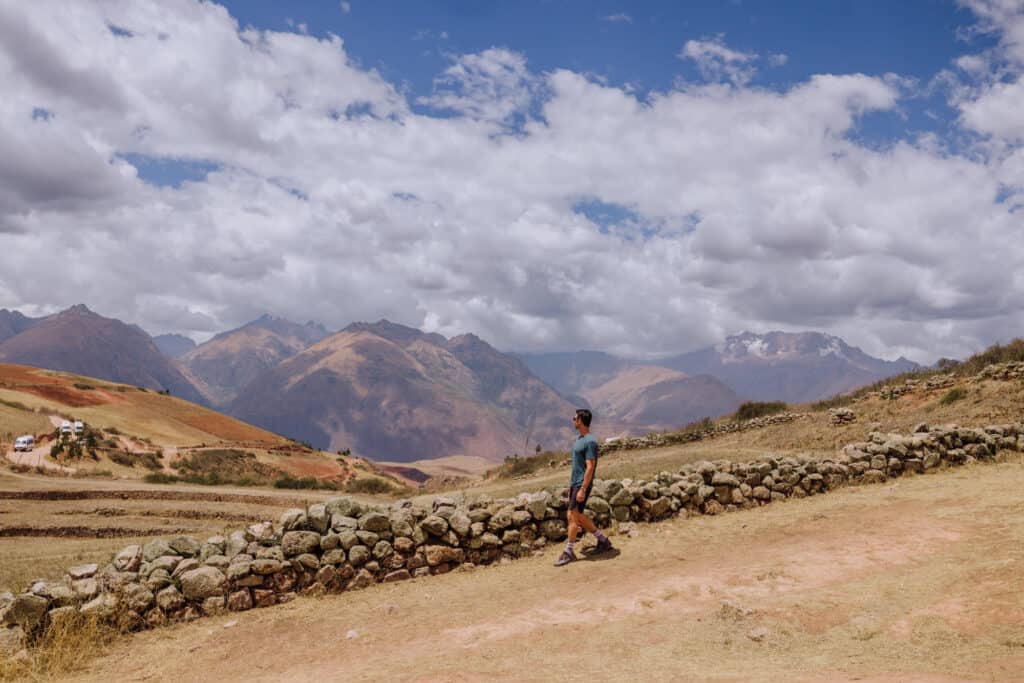
Other Sacred Valley Sites near Maras
In addition to the visually-captivating salt mines of Maras, and the ruins at Moray, the Sacred Valley of the Incas is home to many other cultural sites worth exploring. Here are a few notable sites to add to your itinerary:
- Ollantaytambo: Known for its well-preserved Inca ruins and impressive terraces, Ollantaytambo is a significant archaeological site that offers a glimpse into the Inca Empire’s military, religious, and agricultural practices. The town itself retains its original Inca layout and architecture. It’s also a stop on the Peru Rail line heading to Machu Picchu.
- Pisac: Home to an expansive Inca ruin complex featuring terraces, temples, and ceremonial structures, Pisac offers visitors an opportunity to explore the architectural achievements of the Inca civilization, along with its present-day traditional market.
- Chinchero: A charming Andean village known for its traditional textile weaving, Chinchero offers a glimpse into the rich cultural heritage of the Andean communities. Visitors can observe local artisans demonstrating ancient weaving techniques and explore the locally-made arts and crafts in the town market.
- Yucay: This small town in the Sacred Valley is renowned for its picturesque landscapes and historic colonial architecture. Visitors can explore the Yucay Museum, which offers insights into the region’s history and culture.
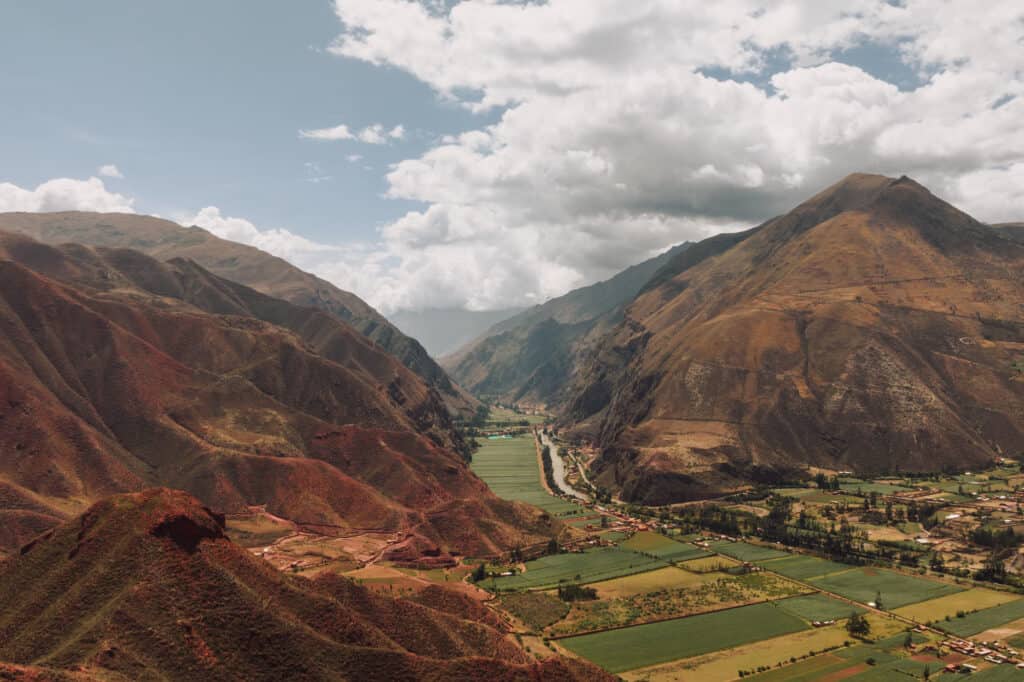
FAQs About the Salt Mines of Maras
Let’s tackle a few frequently-asked-questions about the salt mines of Maras. Most of these are already answered up above.
Where are the salt mines in Maras, Peru?
The Maras salt mines are in the Sacred Valley of the Incas, near the town of Maras, in the Cusco region of Peru.
Maras is 40 kilometers (25 miles) north of the historic city of Cusco. The drive will take just over one hour.
How do you get to the Maras salt mines?
While you can rent a car from Cusco and drive the 25 miles to Maras, it’s easier (and more economically efficient) to hire a driver or take a tour from Cusco.
Can you walk around the salt mines of Maras?
You can walk to different viewpoints at Maras, but visitors are not able to walk along the narrow paths between the salt pools.
During much of the year, workers will be out there collecting the salt.
Many social media posts showing people out in between the salt pools are old, so don’t expect to be able to walk through the site at random on your own.
Can you fly a drone over the salt mines of Maras?
While you may see someone at the viewing platform fly a drone, you’re asked *not to.
As an alternative, there’s a separate parking lot above the salt mine where you can park for a different view of the site. It’s okay to fly your drone from this more public road.
What can you buy at the Maras salt mines?
You’ll find a series of kiosks and outdoor shopping stalls to check out as you leave Maras. In addition to different salt products to take home as souvenirs, they also sell drinks and snacks.
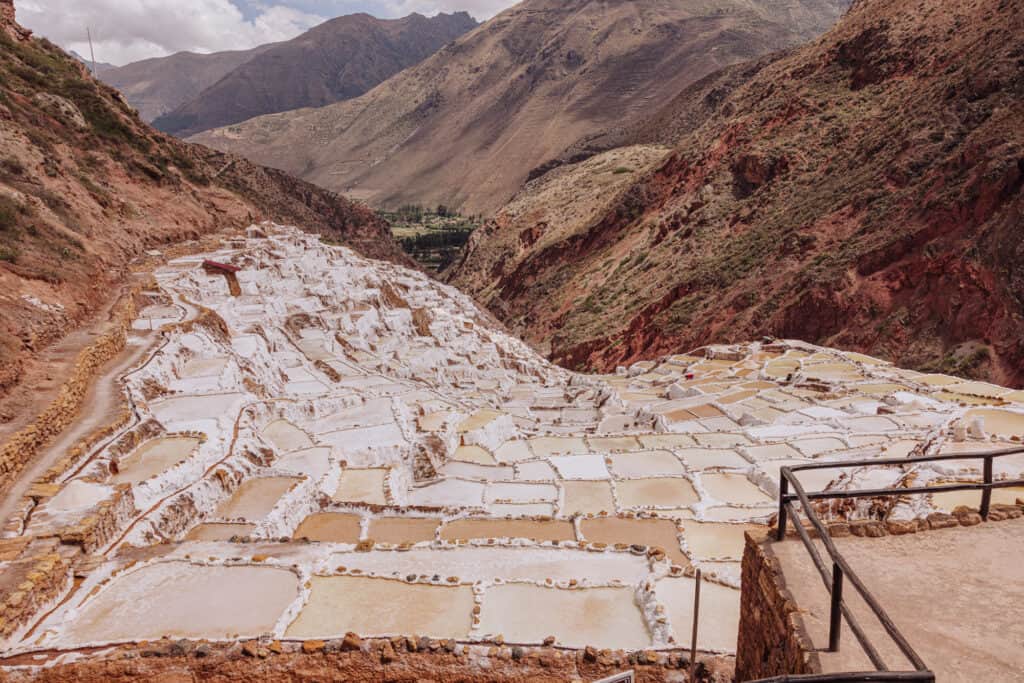
Wrap: Are the Salt Mines of Maras Worth Visiting?
This isn’t a place you’ll spend hours at (largely because visitors are restricted to the viewing pathways and platforms close to the parking lot).
Still, visiting the salt mines of Maras is another way to connect to the local culture, history, and natural environment of the Sacred Valley of the Incas.
While many sites in the region are ruins, Maras provides the opportunity to witness living history and the traditional salt harvesting methods that have been practiced by the local community for centuries.
Add to that, the combination of natural and manmade beauty! The terraced salt pools, panoramic views, and surrounding mountains together create another stunning site in the Cusco region of Peru!
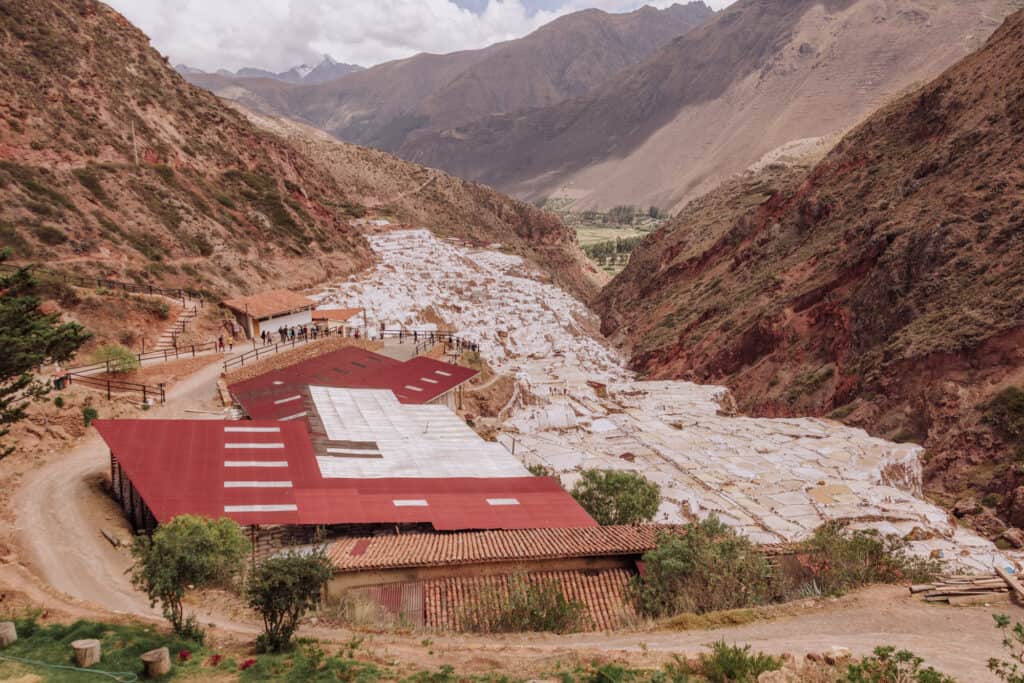
Check out our other posts on the Cusco region!
🇵🇪 Aguas Calientes: Machu Picchu Pueblo
🇵🇪 Cusco to Machu Picchu: Tours, Trains, & More
🇵🇪 Pallay Punchu: The New Rainbow Mountain
🇵🇪 The Best Time to Visit Machu Picchu
🇵🇪 Moray
